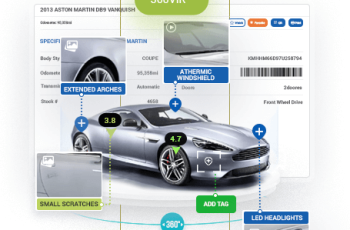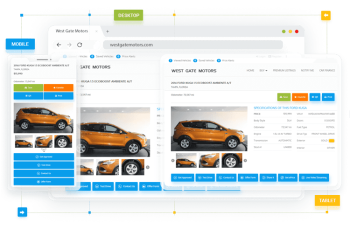Google’s Penalty For Webpage Interstitials

Google continues to be consistent in its desire to improve Internet surfing for mobile users. For this purpose its Mobile-First index algorithm ensures the top positions only for mobile-friendly websites in its search engine results. By this Google has captured the world’s attention with the problem of websites’ usability on mobile devices. Now Google is applying stricter rules for mobile webpages and is about to focus on websites that abuse interstitial ads in mobile versions.
Since 2017 webpages which display large pop-up windows both with ads and any other content on mobile devices will have a low ranking and fall down in the Google search results page. This so called Pop-up penalty is applied for the sites which immediately display a full-size ad either before or after the targeted webpage is reached. This ad is hard to close or remove. It’s usually because of a small and barely visible close button which is difficult to be clicked on the mobile screen.
To reduce the enticement of such interstitials’ owners Google started to lower their page rankings in the search results by moving them to the back pages and reducing their search traffic.
This penalty is imposed only on the webpages, not on the websites themselves for these advertising abuses. In cases where a pop-up makes an important full-screen alert, for example, it asks the user’s age or warns about the use of cookies, the penalty is not applied.
Google, for its part, doesn’t demand that websites stop using pop-ups. Pop-up windows are necessary website elements which transmit important information from a website owner to website visitors. Such messages as ads, contact and email forms, offers, special propositions, etc. are pop-ups which can keep visitors on the site and help return those who left. They can be a good catalyst for any successful business. However, websites should keep a reasonable balance between pop-up management and the overall look to stay afloat in Google’s ranking.
To avoid any falls in the search listings get rid of all uninformative and unproductive ads in your pop-ups. Try to see your interstitial from a visitor’s perspective and evaluate it from its usability point of view. Your goal is not to force a user to perform some action, but to help, and interest viewers with specific offers. As an example, Autoxloo’s Ads and Coupons module was developed to display ads as pop-ups on your dealer website. You can adjust the ad the way you like, but make sure that your mobile version displays the Ads and Coupons pop-ups correctly, not taking up more than 50% of the mobile webpage area. Your interstitial ad should fit 20% of the space, otherwise, the page will get to the end of the Google search results. The other Autoxloo’s widgets which show pop-ups were designed to react on the users’ actions. Only a user initiates their display on the screen by clicking the button, so no penalty is applied to these pages.
Thus, Autoxloo obeys all of Google’s rules and provides the most remarkable performance of all dealer websites. We protect our clients from Google’s penalties and develop the most user-friendly software that meets the requirements of all existing rules and regulations. Our products are also user-friendly for our customers’ mobile users and are secure for dealers. At the same time our clients can set up all the necessary settings by themselves. Our tools and services ensure high quality performance, usability and functionality for any kind of dealer websites and meet all search engine’s demanding standards.




 Search ads
Search ads Mobile ads
Mobile ads